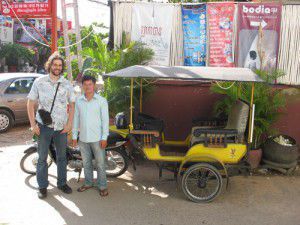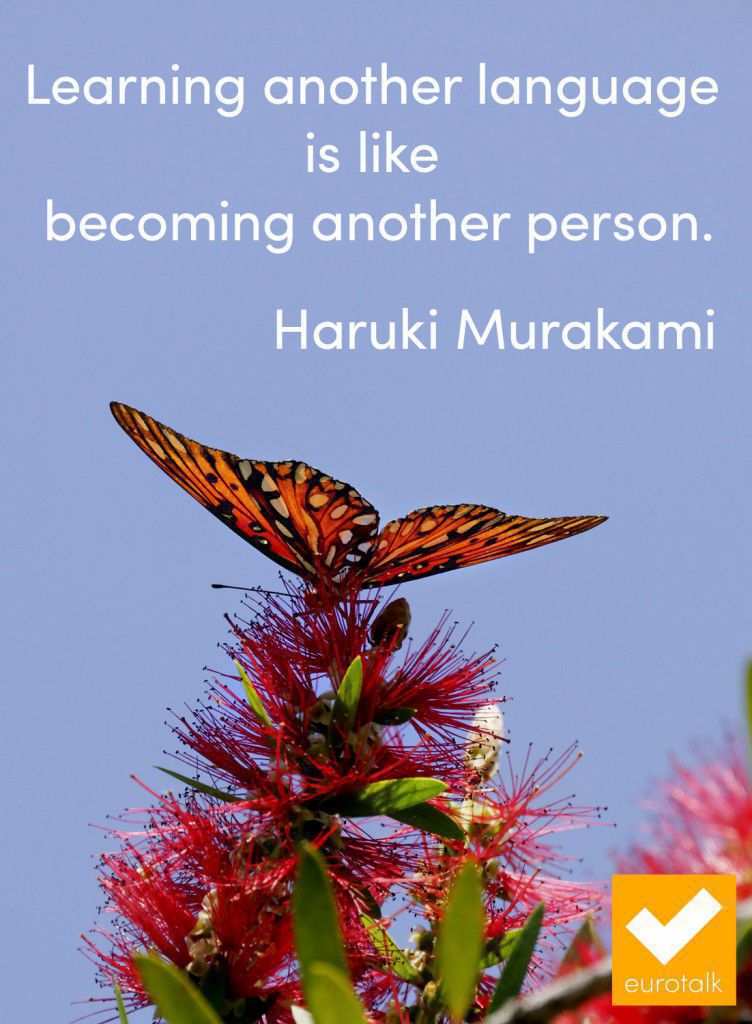An introduction to Finnish
Here at EuroTalk, we love languages (obviously). And we particularly enjoy discovering fun facts about languages; they’re all so different and each has its own unique character. So we’ve decided to share some of them with you, in our new Language of the Week series. Each week, we’ll choose a new language, and we’re always open to suggestions!
Please do get involved – we love to hear from you, so send us your own favourite facts and have a go at our weekly challenge for a chance to win some fun EuroTalk prizes 🙂 You can join the conversation here on the blog, or on Facebook or Twitter, where we’ll be sharing more of our discoveries over the coming few days.
 So this week, we’re starting with Finnish, in celebration of the annual Air Guitar World Championships, which start in Oulu on Wednesday, and may be our new favourite event of all time.
So this week, we’re starting with Finnish, in celebration of the annual Air Guitar World Championships, which start in Oulu on Wednesday, and may be our new favourite event of all time.
Here are a few of the best things we’ve discovered about Finnish this week:
– Finnish is thought to be one of the hardest languages for a native English speaker to learn, because of its complicated grammar, which is nothing like English or any of the other languages we’re used to learning. Finnish words can also look pretty daunting to a new learner, as they’re very long and seem to contain a lot of vowels!
– There is no word for ‘please’ in Finnish – not because Finns are rude, but because they just assume politeness. There is a word which means ‘thank you’, kiitos, which is sometimes used in place of ‘please’, and the other way to indicate politeness is to use the conditional – ‘Would you…’
– Also interesting is that a grandson can be either pojanpoika if it’s the son of a son, or tyttärenpoika if it’s the son of a daughter. The same with granddaughter – pojantytär is the daughter of a son and tyttärentytär is the daughter of a daughter. But don’t panic; you can use just lapsenlapsi, which means ‘child of a child’, for a generic term.
– The word sauna is the most widely used Finnish word in English. There are 3.3 million saunas in Finland, which means there is 1 for every 1.63 people. Visiting the sauna is as normal for Finns as going to the pub is to Brits. It’s also a tradition to jump into the lake outside after a hot sauna. This sounds a little crazy and very cold!
– The Finnish language holds the world’s longest palindrome, and just in case you don’t know what that means, it is a word that can be read the same both ways. And here it is: saippuakivikauppias, which is a dealer in lye (caustic soda). Probably not something you’d say every day, but always useful to know.
– The longest Finnish word is 61 letters long (which is outrageous compared to English’s mere 45-letter longest word) and it is:
entokonesuihkuturbiinimoottoriapumekaanikkoaliupseerioppilas
Which means: ‘airplane jet turbine engine auxiliary mechanic non-commissioned officer student’.
– A Finnish tongue twister is:
Appilan pappilan apupapin papupata pankolla kiehuu ja kuohuu. Pappilan paksuposki piski pisti paksun papukeiton poskeensa.
There is no absolute translation but it’s about a vicarage’s assistant priest and his hot pot of beans, which are boiling on the stove and the vicarage’s fat mongrel who ate up the thick bean soup.
Language Challenge of the Week
So now it’s your turn. Have a go at pronouncing one of the words above, or, for ultimate respect, the tongue twister… Send us your videos on Twitter to @EuroTalk with hashtag #loveFinnish or post a link to your video in the comments below. If we’re really impressed, we’ll send you a code for uTalk Finnish 😉
Oh, and in case you wondered what’s so great about the Air Guitar World Championships…
Quote of the week: 23 Aug 2014
“You can never cross the ocean until you have the courage to lose sight of the shore.” Christopher Columbus
For more like this, find us on Pinterest.
Embed This Image On Your Site (copy code below):
10 reasons to visit… Thailand
Jakub was a junior developer at EuroTalk until recently, and last month he spent a few weeks in Thailand, so we asked him for his tips on what to see and experience in this amazing country. Here are Jakub’s ten reasons to visit Thailand… and if you’ve got anything to add, please write us a comment at the bottom of this post, or tweet us @EuroTalk.
1. Food
Thai food is my personal favourite out of Asian cuisine. A food lover (especially carnivorous) will find himself in a gastronomical paradise once he sets his foot on this land. There are BBQ’d meat stalls every 50-100 metres which offer chicken, pork or liver on a skewer for 10 bahts. The equivalent of 18p. How cool is that. Apart from this you can come across stalls offering rottee (Asian version of pancakes), different kinds of sausages, soups, curries and the all-time classic – pad thai. And if you’re brave enough you can have some deep fried crickets, cockroaches, scorpions and snakes. All made from juicy meat, intense spices and fresh vegetables for less than a quarter of the average UK price.
2. Stunning views
Once you got your plate full of Thai deliciousness you would like to sit down and relax. No worries, dear traveller! You can enjoy gorgeous mountain views in the north (i.e. Doi Suthep near Chiang Mai) or chill out by the beach side in the south (i.e. Ao Nang) or even two combined on one of many islands (such as Koh Tao). Even the cities themselves can offer unique street panoramas (Chiang Mai’s old city).
3. Scuba diving
Thailand is one of the best places on Earth to admire the underwater world. Loved the ocean exploration programmes on travel channels? Well, now you can see everything with your own eyes and within reach of your hand, floating around just like an astronaut in outer space. And it feels like a different world.
4. Moon Parties
Koh Phangan, an island in the south of Thailand, is the host of one of the biggest parties in the country. The biggest one is the Full Moon Party, where you can dance to club music on a beach until sunrise, drinking the famous buckets, and get your body painted with UV reflective paint. Want to go to the jungle? Sure thing! Just keep your eyes peeled and look for the next Half Moon Party, where you can also enjoy dance music topped with fire shows and chilling out on hammocks. There are also less crowded, but still popular Red Moon Parties, Blue Moon Parties, Boat Parties. This island never goes to sleep.
5. Riding a scooter
Scooters and motorcycles play a big part in Asian everyday life – having a scooter is as essential as having a fridge or a washing machine. On top of that you can watch things unseen in Europe, like driving without helmet and shirt, 4-5 people on one scooter, ladies sitting sideways or even dogs balancing in the back! Scooter rental is very popular and, in my opinion, the first thing you should do when coming to a new town. Renting a scooter for a day costs as much as two taxi rides. Beware though – if you haven’t ridden a motorcycle previously, especially in dense traffic, Thailand is not a good place to learn how to drive, even if some rental places will let you without previous experience.
6. Climbing
Krabi is known for its gigantic limestone walls and for that reason it is the Thai capital of rock climbing. Even if you haven’t done this before, don’t worry – there’s a dozen climbing centres offering taster and training sessions. And if you want to spice up your climbs, why not try deep water soloing? If you fall off a wall, you take a dip in the sea and start all over again!
7. Long tail boat ride
Thais know what real recycling is. Apart from the bright, eye-catching colours of their boats there’s one element that stands out – a massive engine taken out from a car and installed on a hinge with a propeller attached to it. You can ask just for a cruise to see magnificent rocks sticking out of the sea or visit a tiny remote island and feel like Robinson Crusoe.
8. Tuk tuk rides
Although tuk tuk drivers will charge you twice or three times as much as a regular taxi, it’s worth the money as a one-off experience. Tuk tuks differ between towns, and the most colourful and distinctive are in Bangkok – motorcycle front with integrated rickshaw-like back is quite comfortable (provided you’re not a 6″3′ bloke) and, if you’re lucky and tip the driver, you might see some wicked tricks on the road (not for the faint-hearted).
9. Thai massage
Yes, I know it sounds cliché, but come on, it’s like being in England and not drinking English tea. One hour-long session and you’ll discover muscles in your body you’ve never used, leaving you crawling out of the place pleasantly relaxed. One thing to bear in mind is to go to such a place during the day with workers wearing uniforms, not by night to a dodgy place with ladies in dresses and high heels.
10. Everything’s cheap
All the things mentioned above have one huge advantage: they’re incredibly cheap. Piles of food for less than 3 pounds, hiring a scooter for as much as a single underground fare, night in a single room for 4 pounds, beer in a bar for a quid and the list goes on. The only real cost is the plane ticket and the rest – you could easily have a month’s trip with a 500 pounds budget. And it’s totally worth it.
Jakub
Thinking of following in Jakub’s footsteps? He found that away from the main tourist areas, knowing a little bit of Thai was really useful. So before you jump on a plane, remember to download uTalk or check out one of our other Thai programs.
Quote of the week: 16 Aug 2014
“Learning another language is like becoming another person.” Haruki Murakami
For more like this, find us on Pinterest.
Embed This Image On Your Site (copy code below):








